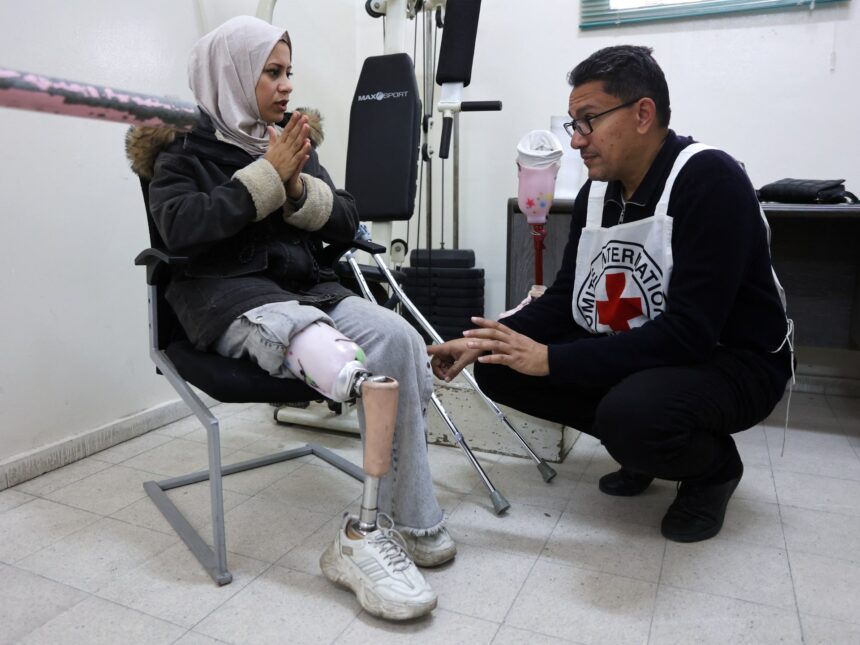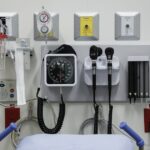I’ve spent the past 16 days between Gaza City and Rafah, witnessing what international observers are now calling a systemic collapse of healthcare infrastructure. The scenes at Al-Shifa Hospital yesterday morning crystallized the situation: doctors performing surgery by mobile phone light, medication rationed by the hour, and a single generator struggling to power life support for 37 critical patients.
“We’re making impossible choices every hour,” Dr. Maryam Khalidi told me as we walked through corridors where patients lay on floor mats. “Do we use our last antibiotics for the child with pneumonia or the elderly man with an infected wound? There is no right answer.”
The International Committee of the Red Cross released findings this week documenting a 78% deterioration in Gaza’s medical capacity since January. According to their assessment, only 11 of Gaza’s original 36 medical facilities remain partially operational, with just three capable of performing complex surgeries.
The World Health Organization‘s regional director Hassan Nasrallah described Gaza’s health system as “beyond extremely fragile” during yesterday’s emergency briefing in Geneva. “We’re witnessing the collapse of not just buildings, but an entire medical ecosystem built over decades.”
This deterioration coincides with alarming new patterns at humanitarian aid entry points. UN documentation shows 47 separate incidents of targeted violence at aid distribution centers in the past month alone. Last Tuesday’s incident at the Kerem Shalom crossing left nine aid workers dead and temporarily halted critical medical supply deliveries for 72 hours.
Standing at that same crossing three days later, I watched as families waited 14 hours for medical evacuation clearance. Among them was Samira Hassan, clutching her 4-year-old son Ibrahim, who needed dialysis unavailable anywhere in Gaza. “He has maybe two days,” she whispered, showing me his medical papers. “Two days, and we have been waiting here for three.”
The economic dimensions of this crisis extend beyond the immediate medical shortages. The World Bank estimates Gaza’s healthcare infrastructure has sustained $1.4 billion in physical damage. More concerning is what economists call “capacity destruction” – the loss of skilled medical personnel through death, injury, or displacement.
“We’ve lost 31% of Gaza’s medical specialists,” explained Dr. Tariq al-Banna, former chief of surgery at Al-Aqsa Hospital, now working from a makeshift clinic in a damaged school building. “You can replace buildings and equipment with money, but you cannot quickly replace a neurosurgeon with 20 years of experience.”
Water contamination has emerged as a parallel health crisis. Testing conducted by Oxfam International last week revealed dangerous bacterial contamination in 83% of available water sources, contributing to a 340% increase in waterborne diseases since March. Children under five are particularly vulnerable, with diarrheal diseases now the second leading cause of pediatric mortality behind direct conflict injuries.
During a rare interview, Israeli military spokesperson Colonel Avichay Adraee defended checkpoints at aid entry points, telling me, “Security protocols at humanitarian corridors are necessary and proportionate to documented threats.” When pressed about medical supply delays, he stated that Israel “expedites critical medical aid whenever possible” but maintained that security screening cannot be compromised.
Palestinian health officials offer a different perspective. “Every day of delayed insulin means more preventable deaths,” said Dr. Nabil Shawa from the Palestinian Ministry of Health. “Every postponed vaccine shipment means more children vulnerable to preventable diseases. This is not collateral damage – this is a humanitarian catastrophe by design.”
International funding mechanisms show troubling gaps. The UN’s Flash Appeal for Gaza has received only 38% of requested funding for medical services, according to their latest financial tracking report. Meanwhile, neighboring Egypt’s field hospitals near the Rafah crossing report operating at 317% capacity.
The psychological toll on medical workers is increasingly evident. At Al-Aqsa Martyrs Hospital, I spoke with nurse Fatima Abdel-Rahman, who hasn’t left the facility in 41 days. “We sleep two hours, sometimes three if we’re lucky,” she said, her scrubs stained with blood that wasn’t fresh. “I’ve stopped counting how many children I’ve watched die. There’s no time to process what we’re seeing.”
Palestinian civil defense teams face extraordinary challenges retrieving the injured from collapsed buildings. “Sometimes we dig for hours to reach someone trapped, only to find the ambulances can’t get through or have no fuel,” explained Mahmoud al-Haddad, a civil defense worker in northern Gaza. “People die waiting who might have lived with prompt medical care.”
The destruction of medical records and digital health infrastructure presents long-term complications. An estimated 89% of Gaza’s medical record systems have been destroyed, according to WHO assessments. “This means patients with chronic conditions like diabetes or heart disease have lost their medical histories,” explained WHO emergency coordinator Dr. Rik Peeperkorn. “Medication allergies, surgical histories, blood types – information that saves lives is simply gone.”
As I filed this report from a damaged communications center in central Gaza, the sound of ambulance sirens provided constant background noise – a soundtrack to a health system fighting for survival against overwhelming odds. The immediate forecast from medical professionals here is grim: without substantial intervention, the remaining medical infrastructure will likely collapse entirely within weeks, not months.






